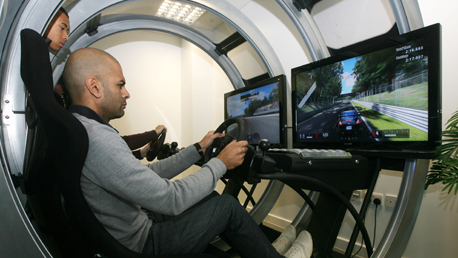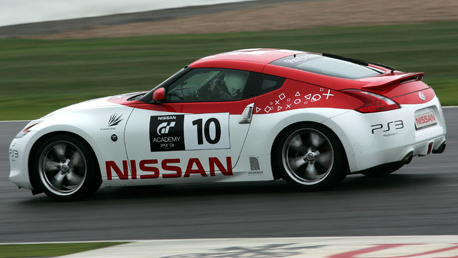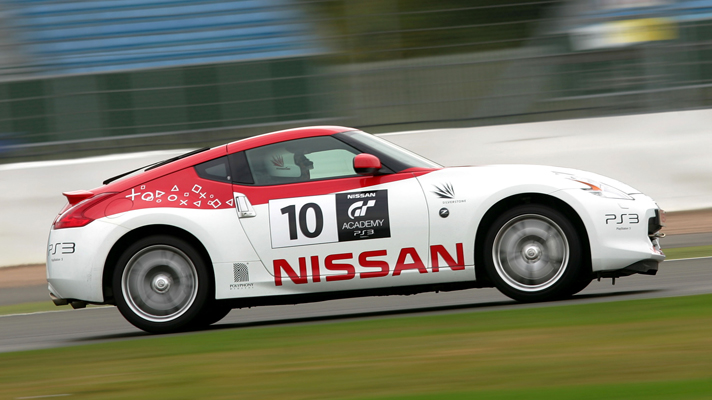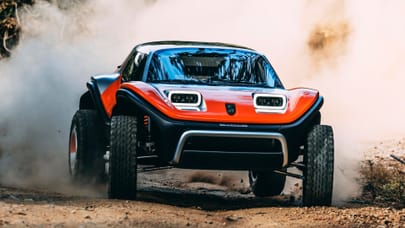
TopGear.com’s guide to race driving
Monaco, 1988, and qualifying for the most illustrious grand prix on the calendar has yielded a nugget of racecraft that millions will pore over for years to come. A vital insight into the mind of one of the sport's greats; an invaluable lesson into the necessary mental predilection required to perform at the very edge of your talent pool.
"And suddenly I realised that I was no longer driving the car consciously, I was driving it by a kind of instinct, only I was in a different dimension. Suddenly, it frightened me, because I realised I was well beyond my conscious understanding."
The immortal words of Ayrton Senna. Already on pole, the Brazilian maestro kept pumping in lap after lap, setting ever more faster times in his McLaren, until he ‘woke up' from his almost transcendental state, returned to the pits and refused to drive anymore that afternoon.
This is what goes through the mind of a racing driver. And operating at this capacity requires a particularly gruelling pilgrimage. A pilgrimage Nissan's GT Academy - and a 325bhp Nissan 370Z - helped me undertake. We're at Silverstone, and we're about to have sneak peek into the world of a professional racing driver. And how ruddy hard it is.
The first lesson? "All of the hard graft is done before the corner even arrives," bellows Steve Deeks, director for Nissan's GT Academy; the same GT Academy that put a young Spanish computer thumbsmith behind the wheel of an LMP2 prototype at Le Mans earlier this year. And won best in class.
"If you haven't sorted yourself out before that corner arrives, you're finished," he says.
He reels off a checklist akin to a weekly shop at Sainsbury's. "Have you got the right line? Are you in the right gear? Have you looked through the corner? Have you worked out where the apex is? Do you know where your braking zone is? All of this has to be sorted out before you even stamp on the brakes."
And bear in mind that behind the wheel at some considerable speed, you don't get much thinking time, just ‘doing' time. Perhaps Ayrton was onto something about transcendental driving.
Now, unless you've had previous track time, you will flap about the track like a drunken, beached sea mammal desperately clinging to the edges of the kerb for support. We know, we've done it. Using only the knowledge gained from schoolyard lore, Cooper Tires British F3 Series driver Harry Tincknell rode shotgun while we attempted to string together a lap in a Caterham Seven Supersport. It was hairy, to say the least.
So time spent clocking up some virtually imagined, computer rendered miles free of a fiery accident would be wise. Step forward 20-year-old Jann Mardenborough, 2011 Nissan GT Academy winner.
Top Gear
Newsletter
Thank you for subscribing to our newsletter. Look out for your regular round-up of news, reviews and offers in your inbox.
Get all the latest news, reviews and exclusives, direct to your inbox.
"You want to be precise with your steering input," he casually regales as an attempt on Gran Turismo 5 is made. "Obviously, in real life racing you get more visual clues about your environment, but the key lesson still applies. You have to look through the corner."
Clearly, I am not. Which is why I'm currently caressing a digitally rendered barrier at Monza. Still, better here than on track. Jann's concern gets ever more prescient, and he hops on to show me how its done. And he is annoyingly good. Often, he's not even staring at the screen, the git.
Watching him - his lines, his steering, his throttle control and gear selection - you start to get a feel for the basics. And, sure enough, after more strained tutelage from the young Jedi, I manage to shave off 20 seconds on my virtual lap. I emerge from the pod impressed. Jann is smiling. He must be happy, right?
"It's still at least ten seconds off my quickest time," he smirks. Did we mention he wasn't even looking?
There could be a reason for that, and it's all in the mind. Driver training doesn't stop at learning entry and exit points and managing steering input. Focusing on the task in hand is actually a mighty useful aspect of racing.
"We tend to ignore our sub-conscious," says Gavin Gough, a qualified sports psychologist and Neuro Linguistic Programming coach. "We ignore it but it records everything in minute detail and when we focus our conscious mind on it, we can access a different level of understanding."
Sound a bit nu-generation hokum? Not one bit, TopGear.commers. Sebastian Vettel regularly closes his eyes while waiting in the cockpit, literally visualising his race and how he will achieve the result he wants. And how many times have we heard the German national anthem this year? Even Senna used to ‘visualise'.
"Ayrton's true genius," says Gavin, "was to mentally drive a lap and identify in his mind where he could improve."
You've no doubt seen the reels of Senna sitting in the cockpit of his F1 car, fingers on his temples, eyes closed: that was game time for the Brazilian.
Of course, you have to be fit - your reactions have to be razor sharp, your grip levels herculean and your stamina must be iron-clad - but it is possible. Putting this expert tutelage to good use, we recorded two Silverstone laps in a Nissan 370Z; one before the training, one after.
After just a day, we managed to shave off 14 seconds from a lap. That's one day.
Watch out Seb.
Trending this week
- Car Review
BMW 1 Series










